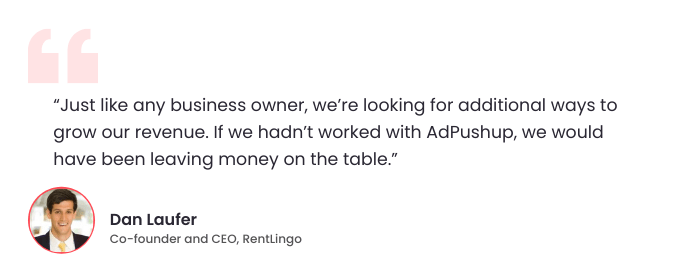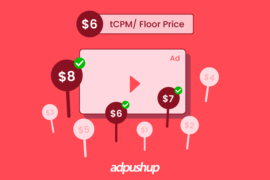Okay, so you want to make money from your blog.
The good news is that you’re in great company—there are many professional bloggers out there who have turned blogging into their full-time job. Heck, some even earn six-figure incomes. So you know it’s not a goal that can’t be achieved; there may be hiccups along the way, it may not buy you an Aston Martin DB9 in six months, but making money is fairly in the realm of possibility.
Consider this post your detailed, step-by-step guide on how to monetize your blog. We’ll start with the basics, and then move over to discussing strategies, understanding online advertising jargon and lingo, useful tools and services, and advice from industry experts.
Let’s get started!
Building a strong foundation
Before we jump into the business of money making, let’s consider a few other important things. Just like a stable building needs a strong foundation, so does a blog. If you skip this stage or don’t give it as much attention as it needs, you won’t succeed, no matter how much effort you put into implementing the actual monetization strategies.
-
Create a content plan
“Failing to plan is planning to fail,” said author Alan Lakein, and there couldn’t be a more apt way to think about content creation. Spend some time planning your strategy before you fire up the editor and start typing away your masterpiece—it’ll help you save both time and headache later. If you don’t have a plan, you’ll just be throwing things at a wall hoping that something sticks.
Here are a few questions to ask yourself –
- What niche am I going to target? (Like fitness, personal finance, psychology, etc.)
- What kind of content do they engage with and share the most?
- What type of content are other well-established players in the niche creating?
- How often am I going to publish? Will I work according to an editorial calendar?
- How will I present my content? Lists, how-tos, guides, opinion pieces?
Answering these questions will get you think in a more organized manner about your blog.
Once you’ve given this some thought, go ahead and create a list of topics that you’re going to cover on your blog—categories basically.
For instance, content on an automotive blog may be divided into the categories cars, bikes, features, DIY maintenance, advice, etc. This will help bring focus into your content creation process and help you avoid making the mistake that so many hobbyist bloggers make—i.e., talking about cheese one day and chalk another.
-
Choose the right platform
There are a lot of platforms out there when it comes to blogging, perhaps even too many. There’s WordPress, Blogger, Tumblr, Medium, Svbtle, Quora, Google+, Facebook Notes, Ghost, Squarespace, Typepad, LinkedIn influencers, and more.
Let me cut to the chase. If you’re serious about blog monetization, your only real option is WordPress. Phew, that wasn’t so bad to hear, was it? More than just a blogging platform, WordPress is a full-fledged content management system.
Some of the most successful blogs and magazines on the Internet such as Ars Technica, Gizmodo, Wired, Techcrunch, The New Yorker, Fortune, Time, New York Times, Harvard Business Review, and many more (you get the idea) are powered by WordPress.
The Next Web calls it, “The big daddy of all blogging platforms.” And for good reason. The level of customization that WordPress allows to its users in the form of themes and plugins is just unparalleled compared to any other platform.
One thing you need to be careful about though, there are two versions of WordPress—one is WordPress.com, which is a freemium version, and the other is WordPress.org, which is the CMS that you can download and setup on your own domain and hosting.
You need to go for the latter. If you already have your blog on another blogging platform, consider moving it to your self-hosted WordPress blog, it’s pretty easy to do with import and export tools.
Be aware, there may be a slight learning curve, or you may just be used to the familiarity of another platform, but once you start getting the hang of it—you’ll never go back to anything else.
-

Invest in great design
Design separates average blogs from great blogs. This doesn’t mean you have to break the bank to hire a top designer to do a custom job for you, there are many out-of-the-box themes in the market that you can buy and then tweak according to your specific needs.
Most such premium themes will cost you somewhere between $40 and $60, which is a pretty good deal. A few good places to look for them are ThemeForest, WPTiger, and Elegant Themes.
The investment in great design doesn’t just end at the price of the theme though, you will need to invest your time making customization in order to make the theme your own.
This isn’t half as difficult as it sounds, especially with all the helpful information out there. Still, if you can’t can’t seem to get your head around it, request a geek friend to help you with understanding the basics like theme appearance, widgets, and plugins to begin with. A few things to consider when buying a new theme are:
- Is the theme responsive?
- What level of customization does it offer?
- Does it support WordPress Menus?
- Is the theme widgetized?
- How secure is the theme?
In case you need it, here’s a more detailed guide to the things you need to look for in a WordPress theme.
-
Focus on gaining traffic
Now that you’ve got your content plan, blogging platform, and design all sorted out, give yourself a high five—you’re well on your way to becoming a problogger.
Now we come to the most important bit, i.e. getting traffic. Making money from blogging is pretty much a pure numbers game. All things being equal, a blog that gets 500,000 unique monthly visitors will earn 10X more ad revenue compared to one that gets 50,000… it’s really that simple.
So if you want to make a sizable amount of money from blogging, you need to figure out and do what it takes to have a sizable amount of traffic rolling in. But that’s a topic that deserves an entire post in itself, and till the time we get around to writing that post, let’s, for the sake of argument, assume that you already have a sizable amount of traffic coming in.
How to monetize your blog
Finally, after that essential primer, we come to the information that you came here for. There is not one but many way to monetize your blog, and you’d be much better off using a combination of them instead of using just one. Let’s begin.
-
Sign up for PPC or CPM advertising
As the name suggests, pay-per-click (PPC) ad networks pay publishers a certain amount of money for every reader who clicks on an advertisement.
In most cases, you get a code during signup that needs to be inserted on your blog and you’re ready to go, though approval from the network may involve some steps and usually takes a little time.
Almost all professional bloggers use the services of some or the other PPC ad networks as a primary means of generating revenue. Google AdSense is the most widely used PPC ad network in the world, though there isn’t a dearth of options in the market.
CPM ad networks are similar, but instead of clicks, they pay based on every 1,000 impressions an ad receives—where impression means that the user viewed the ad, even if they didn’t click on it.
Your mileage will vary, both between PPC or CPM and amongst different networks, so you may want to try multiple ones and then settle on the one that works best for you.
-
Sell your own ads
PPC/CPM and banner advertising are the same in principle but differ in functionality. Whereas there’s a lot of automation involved in the PPC/CPM ad serving process, banner advertising gives you more control over it.
It essentially involves selling space on your blog directly in standard banner sizes such as 728×90, 468×60, 120×600, and 160×600. You can sell your own space units by putting it on offer on a page with a media kit, or you can sell it via one of the many banner ad networks on the Internet such as BuySellAds, Blogads, and MediaNet.
-
Join an affiliate program
Affiliate marketing is a form of performance based marketing where a blogger (“affiliate”) gets paid for a product that is sold through his or her own promotional efforts.
Typically, an affiliate receives a link to the product’s sales page, which they place somewhere on their blog in the form of a link or a review, although other methods such as email marketing, content marketing and in some cases display advertising are also used.
Whenever a reader ends up buying a promoted product, the affiliate earns a commission, which can range from anything between 10% to 70% of the product or service price.
If done right, affiliate marketing can easily become the second largest source of ad revenue for a blogger after display advertising, and often times even surpass it. Some of the most widely used affiliate marketing companies are CJ Affiliate, and ClickBank.
Apart from these, major retailers such as Amazon and eBay run their own affiliate programs as well.
-
Accept sponsored posts and articles
Let’s say you have a blog about cars and most of your readers are consequently car enthusiasts. If you have a good amount of traffic, a manufacturer of car performance upgrade kits may be interested in promoting their products on your blog.
One way to go about it could be to place an ad, but that’s not the only way. You could review their products on your blog in exchange for a certain amount of money, or even announce the launch of a new product range.
A form of native advertising, this is a win-win for everybody, you’re providing valuable information to your readers, you’re helping a business market their products, and you’re making money in the process. What’s not to like?
Of course, there has to be some relevant link between your blog’s content and the content of the sponsored post for this to work. PayPerPost is one place to find people who are looking to get their posts sponsored.
-
Generate leads for businesses
Lead generation is like affiliate marketing, except you don’t need to sell any product in order to earn money. You just have to generate “leads”. What are leads?
Imagine that you run a blog about guitar lessons, and you have a lead generation partnership with a manufacturer who sells guitars… if any of your readers provide their information (such as name, email, phone number etc.) and opt to be contacted by your business partner—that’s a lead. And you can get paid for every lead that you generate.
MaxBounty, Neverblue, and PeerFly are a few networks where you can seek such offers.
-
Sell products and services
This is a great way to supplement your blogging income and diversify. What’s your specialty? Do you blog about yoga? You could consider taking classes. Or you could create an eBook on the subject and sell it for a price. Do you blog about personal finance? You could offer to work as someone’s personal finance adviser or portfolio manager, for the right price. Or you could start a paid email course that teaches people how to build their asset base.
-
Run full page or mobile interstitial ads
Interstitial are web pages that are displayed before or after an expected content page, usually for the purpose of display advertising. It has an advantage over other forms of advertising in that it usually commands the full attention of the user. On the other hand, this is also seen by some people as being too obstructive.
Whatever the popular opinion about interstitials may be, the fact is that they work—often times much delivering performance much higher than any other type of online advertising. According to an article on VentureBeat, mobile interstitial ads can drive up to 25X increase in video views, a 7X increase in conversions, and 9X increase in eCPMs. AdMedia, TapAge, and Clicksor are just a few companies that let you run interstitial ads.
-
Set up in-text advertising
In-text advertising help publishers generate revenue by converting the text in their pages into paid links to products and services. This isn’t something that you could depend on as a primary source of revenue generation, but if you’re looking to make a little extra money, you could give it a shot.
Although you need to decide whether the money that you earn this way is worth alienating a few users because in-text advertising is generally considered by web usability experts to be misleading way of advertising. Infolinks, Vibrant Media, and BuiltinTEXT are some in-text ad networks that you could consider using.
-
Use related content services
Showing related content under your posts is a great way to monetize your blog below the fold. A related content service will typically scan the text on a page, and then recommend similar stories from all over the Internet—once a user clicks on an external story, you get paid by that publisher for the traffic that you just sent their way.
It’s a simple system that works without making the user feel like they’re being shortchanged in some way or are being bombarded with irrelevant advertisements. The main players in related content monetization are Outbrain and Taboola, and they both operate on a similar model except for one small difference.
While Outbrain filters the content recommendations to maintain a higher level of quality, Taboola, instead of filtering links, lets users offer feedback on what recommendations they don’t like.
In conclusion, this is not an exhaustive list of strategies, but it is enough to get a beginner started into the world of blog monetization.
Keep in mind, it’s never a good idea to sacrifice your blog’s user experience in order to earn a few more bucks.
While all the strategies discussed above are great in their own right, if you try to implement all of them at the same time, there’s a good chance that your pages might end up looking like a hot mess.
Instead, begin with one or two, and once you see some success with them, add others gradually into your mix.
Do what the experts are doing
It’s a great thing to have the enthusiasm to want to make apple pie from scratch, but if you have a professional chef’s recipe at hand, you just save yourself days and weeks of trials and error experiments.
Same goes with blog monetization. Instead of trying to figure out everything on your own, why not use the knowledge of people who have been there, done that? Here are a few amazing nuggets of monetization advice that’ll help you see results faster, with less legwork.
“When it comes to squeezing the most out of monetizing your blog what’s most important is that you choose more than one income stream. You need to have multiple methods of generating income to fulfill relevant needs your visitors are looking for. You never want to put all of your eggs in one basket in any situation. This applies to monetization as well.” — Matt Banner of On Blast Blog
“I prefer to sell my own products because you always sell more of something you created yourself, plus there is wonderful sense of fulfilment when you sell something you created. It’s the dream of an artist or writer to make a living from their own craft, which is what I get to do today as a blogger, and recommend all other professional bloggers focus on too.” — Yaro Starak of Entrepreneurs Journey
“According to our research, the bloggers who reach six figures in revenue the fastest begin with some type of coaching or consulting service. Unlike creating courses or writing an e-book, there’s no preparation. You can decide to start selling coaching services and have your first client by this evening.” — Jon Morrow of Boost Blog Traffic
“My favorite way to monetize my blog is to create inspired, in-depth content. I relish publishing helpful, long, inspired blog posts to help my audience because hey; your content is the most important blog monetization tool, or strategy. The channels vary, but you proving that you know your stuff, through the free content you share, is what puts money in your pocket.” — Ryan Biddulph of Blogging from Paradise
“My favorite thing is to grow a mailing list around a tightly targeted niche by buying traffic through ad placements on relevant sites, or guest posting on relevant topics. My aim is to make my guest posts on authoritative sites rank on Google for at least 5 years so I get a constant stream of referrals.” — Ramsay Taplin of Blog Tyrant
“I earn commission from reviewing products, creating tutorials, and recommending products I use. I used to dislike this method because I wasn’t sure how to do it properly. I thought it was super complicated…until I watched how the pros do it, and figured how to actually work it. It may seem hard at first but once you learn how it works, it’s a lot fun and you’ll be amazed at how simple it is. Sure, it may take a lot of work, but it’s worth it.” — Pauline Cabrera of Start Your Blog Online
“Selling my copy writing and digital marketing services works great for me. That’s my main form of income and has been for the last 17 years. It earns me more than all my other forms of blogging income, it’s a service my readers need and it gives me job security. I don’t really like the advertising model. Although it’s a great way to supplement blogging income I wouldn’t want to earn all my income that way.” — Annabel Candy of Successful Blogging
“I use a mix of AdSense, affiliate marketing and selling my own products. In fact this is the first rule I try to follow: diversification. If you rely on a single source of income your risk of getting in trouble is too high. As far as advertising goes I think AdSense is still the best option, as their rates tend to be the best in the market, and the payments are always accurate and timely.” — Daniel Socco of Daily Blogging Tips
What kind of success are you currently seeing with your monetization efforts? What are the challenges that you’re facing? Let us know in the comments.
Image by Tax Credits

Shubham is a digital marketer with rich experience working in the advertisement technology industry. He has vast experience in the programmatic industry, driving business strategy and scaling functions including but not limited to growth and marketing, Operations, process optimization, and Sales.







